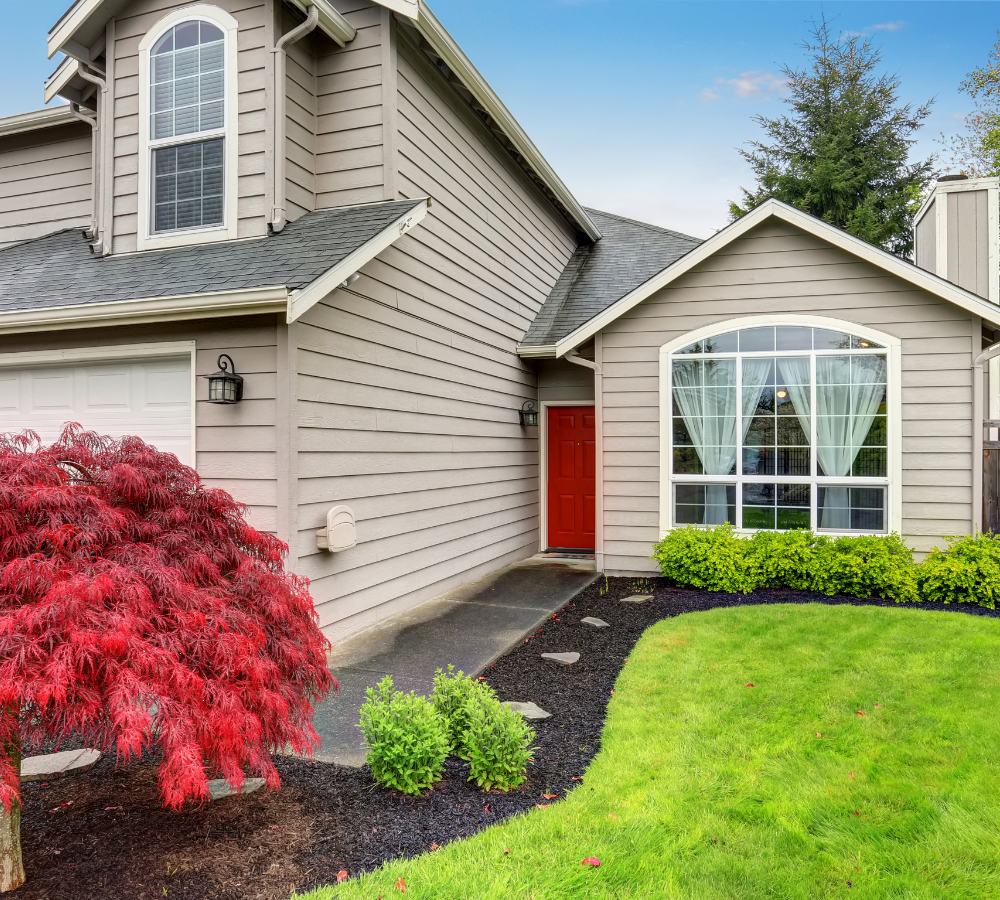You may paint the interior of your home at any time of year and in almost any situation. Since homes have regulated settings, it is possible to set the temperature and humidity to the ideal levels for painting.
It’s a very different story, though, when it comes to painting the exterior of houses. Unfortunately, your project’s success is frequently dependent on the environmental factors you deal with. You will need to tailor the project around the weather circumstances rather than the other way around. So when is the ideal time to repaint the outside of your home?
When Should I Paint My House’s Exterior?
The best time to paint a house’s exterior is generally thought to be during the summer. The weather is pleasant and the chance of rain has decreased by that time of year.
In different regions of the country and the world, summer does not always imply the same thing (or span the same months). Therefore, it’s more crucial to concentrate on the days that have the right weather than it is on the season.
Rain
Not all of summer is suitable for painting, particularly in locations that receive hurricanes or monsoon-like weather near the end of summer. Residents in hurricane-prone areas of Texas, Louisiana, and Florida cannot depend entirely on the summer for painting. When painting in areas like these, begin the project early in the year or postpone it until the cool fall months.
Heat and Direct Sunlight
The possibility of rain impeding outdoor painting is simple to focus on. Still, it’s best to stay out of the sun and really hot temperatures. It takes enough time for the water in water-based latex paint to naturally evaporate before the paint has a chance to dry. Less fragile is oil-based paint. Oil-based paint has a greater curing temperature range, with a range of up to 10 degrees on each end, even though it takes longer to cure than water-based paint. Paint will prematurely cure in the presence of heat and sunlight, drying instantaneously after application. Avoid this by not painting while the the sun is directly overhead or shining directly onto the surface to be painted.
Additionally, you must wait for an hour or two after the sun has set for the home siding to cool.
Keep inspecting the surface for dark siding or for thick materials like fiber-cement that have a tendency to hold heat.
The surface should be prepared for painting when it is cold to the touch.
Painting During Autumn
When deciding to paint the outside of your house, temperature changes are another crucial aspect to take into account. When temperatures change much, as when a day hits 105°F then lowers to 43°F in the evening, paint doesn’t dry effectively. Due to the fact that daytime and evening temperatures are frequently closer than at other times of the year, early fall may also be a good time of year to paint.
Painting During Winter
It might be challenging to properly paint the outside of a house during the winter in some regions of the nation since many paint manufacturers advise a minimum outdoor temperature for painting. However, the minimum temperature requirements rise as paint quality improves. In the past, it was advised never to paint a home while the temperature was below 50°F. But with today’s paint formulas, you can paint in as little as 35°F. What this means for American homeowners painting their homes is that they should stop painting about November. Southern American states allow for comfortable painting until December. In reality, certain regions of the United States are sufficiently temperate that year-round painting is acceptable.
Painting in Moist Conditions
Paint should only be applied on a dry surface as a general rule. When painting outside, there is a chance that the surface may become wet, either from snow and rain or from the humidity in the air. Do a thorough inspection of the surface you’ll be painting if you’re unclear whether moisture is present on your outside; if it feels damp in the least, do not apply paint. This is especially valid if you recently went through bad weather. Your home’s inside may be moist even though the exterior doesn’t feel wet to the touch, especially if it’s composed of porous materials like untreated wood or masonry. It’s better to put off starting another painting project until the rain has stopped for at least a full day.
Remember that moisture may occur indirectly as well; it doesn’t necessarily manifest itself as a powerful rainstorm. Even though it was a dry 70°F just six hours ago, dew that forms overnight or in the early evenings can just as readily harm exterior paint.
Paint Quality
Exterior painting is one of the most important elements in home maintenance, as it can protect your home from severe weather conditions and impacts the overall aesthetics. Therefore, when selecting paint for the outside of your home, quality should take precedence over cost. It is important to choose a weatherproof option with a long lifespan to guarantee you don’t have to repaint for years to come. In addition, choosing an appropriate color palette carefully can be beneficial too; different colors reflect levels of heat differently and can lead to more efficient temperature regulation throughout your home year-round. Exterior painting requires a good level of planning, with selecting suitable paint being one of the most vital considerations from start to finish.
If you are looking for quality paint, Sherwin Williams has a wide range of weatherproof and durable color options.
Why You Should Hire A Professional
There are three major reasons why homeowners hire professional painters:
-
They Have The Skills And Experience
One of the most important reasons to hire a professional painter is because they have the skills and experience needed to get the job done right. Painters have been trained in their field and know how to properly complete the task at hand. They also have a great deal of experience, which means they know how to troubleshoot any problems that may arise.
-
They Save You Time And Money
Another reason to hire a professional painters is because they can save you time and money. When you hire a professional, you don’t have to spend time researching how to do the job or learning what tools and materials are needed. Additionally, they have access to discounts and can often get the job done more quickly than someone who is not experienced. This can save you money in the long run.
-
They Provide A Quality Service
When you hire a professional painter, you can be confident that you will receive a quality service. Professionals stand behind their work and will make sure that you are satisfied with the final product. Additionally, they will usually offer some type of warranty or guarantee in case something goes wrong.
If you are looking to hire a professional painter for your next home project, we have you covered. Contact us for a free no obligation estimate today.


